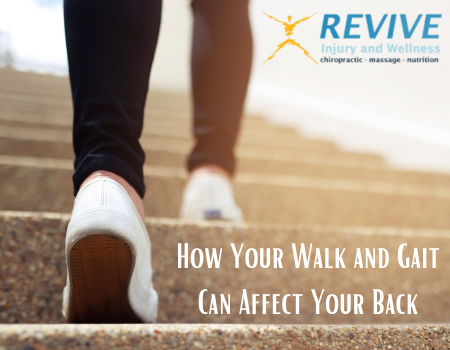The way you walk and your overall gait can have a significant impact on your back health. Often overlooked, these aspects of movement play a crucial role in maintaining proper spinal alignment and preventing back pain. Understanding the relationship between your gait and back health can help you make adjustments that promote better posture and reduce discomfort. This article explores how your walk and gait can influence your back and offers practical advice for improving both.

The Connection Between Gait and Back Health
Your gait refers to the pattern of movement as you walk or run. It involves a complex interplay of muscles, joints, and bones working together to maintain balance and propel you forward. An abnormal gait or walking pattern can place undue stress on various parts of your body, including your back. Here’s how:
Postural Imbalances: An improper gait can lead to postural imbalances. For instance, if you tend to lean forward while walking or favor one side of your body, it can cause uneven pressure on your spine. Over time, these imbalances can contribute to spinal misalignment and back pain.
Altered Spine Mechanics: Your spine is designed to absorb shock and support your body during movement. An abnormal gait can disrupt the natural mechanics of your spine, leading to excessive wear and tear on spinal structures. This can result in conditions such as herniated discs, degenerative disc disease, or chronic lower back pain.
- Muscle Strain and Imbalance: An irregular walking pattern can place additional strain on muscles that support your spine. For example, if you walk with an uneven stride, it can cause certain muscles to become overworked while others are underused. This imbalance can cause strain in the muscle strain, and lead to back pain.
Joint Stress: Your gait affects the way force is distributed through your joints, including those in your lower back. Abnormal walking patterns can lead to increased stress on the lumbar spine and sacroiliac joints, potentially causing discomfort and contributing to chronic back issues.
Identifying Gait Issues
Recognizing gait issues can be the first step toward addressing back pain. Common indicators of gait abnormalities include:
- Uneven Stride: Walking with an uneven length of steps or a noticeable limp.
- Excessive Pronation or Supination: Over-pronating (rolling your feet inward) or over-supinating (rolling your feet outward).
- Poor Posture: Leaning forward or backward excessively while walking.
- Difficulty Maintaining Balance: Feeling unsteady or off-balance during movement.
If you notice any of these symptoms, it may be helpful to consult a healthcare professional for a gait analysis. They can assess your walking pattern and identify any issues that may be contributing to your back pain.
Improving Your Walk for Better Back Health
Making adjustments to your walking patterns can help alleviate back pain and improve overall spinal health. Here are some strategies to consider:
Seek Professional Evaluation: Consulting with a physical therapist or chiropractor can provide valuable insights into your walking patterns and its impact on your back. At Revive Injury, experienced professionals offer gait analysis and personalized treatment plans to address any issues and promote better movement patterns.
- Strengthen Core Muscles: A strong core supports your spine and helps maintain proper alignment. Include exercises that focus on your abdominal and lower back muscles to enhance stability and minimize strain on your back.
Improve Posture: Pay attention to your posture while walking. Aim to walk with a straight back, shoulders relaxed, and your head aligned with your spine. Proper posture can reduce the risk of developing back pain and improve overall gait efficiency.
Choose Supportive Footwear: Wearing shoes with proper arch support and cushioning can help correct gait abnormalities and reduce the impact on your back. Avoid high heels or worn-out shoes.
Practice Mindful Walking: Be mindful of your walking pattern and make adjustments as needed. Try to maintain an even stride and distribute weight evenly between both legs. Practicing mindful walking can help correct gait issues and alleviate back discomfort.
Incorporate Stretching: Regular stretching of the hamstrings, hip flexors, and lower back muscles can improve flexibility and reduce muscle tension. This can contribute to a more natural and balanced gait, reducing the risk of back pain.
Your walk and gait play a crucial role in maintaining back health. Abnormal walking patterns can lead to postural imbalances, altered spine mechanics, muscle strain, and joint stress, all of which can contribute to back pain. By paying attention to your gait and making necessary adjustments, you can improve your spinal alignment and overall well-being.
If you’re experiencing back pain or suspect gait issues, seeking professional help can make a significant difference. At ReviveInjury.com, experts can provide comprehensive gait analysis and tailored treatments to help you address any concerns and enhance your back health. Taking proactive steps to improve your gait can lead to lasting relief and a better quality of life.


